Last updated: May 29, 2025
The American Paint Horse is more than just a colorful breed—it’s a living symbol of versatility, intelligence, and American heritage. Over decades of working with Paints, I’ve seen firsthand how their unique personalities and stunning patterns captivate both riders and audiences. In this guide, I’ll share not just the facts and science but also the practical routines and care insights that have made my Paints healthy, happy, and successful in the arena and on the trail.
Quick Facts
- Breed Registry: American Paint Horse Association (APHA)
- Recognized Patterns: Tobiano, Overo (Frame, Sabino, Splash), Tovero, Solid
- Base Colors: Bay, Black, Chestnut, Palomino, Dun, Grullo, Buckskin, Gray, Roan, and more
- Average Height: 14.2–16.2 hands (Thoroughbred-influenced Paints can reach 16.2 hands)
- Temperament: Friendly, trainable, athletic
- Registry Size: 800,000+ Paints registered as of May 2025
- 2025 Rule Change: All registered Paints, including Solid Paint-Breds, now compete together in APHA-approved events
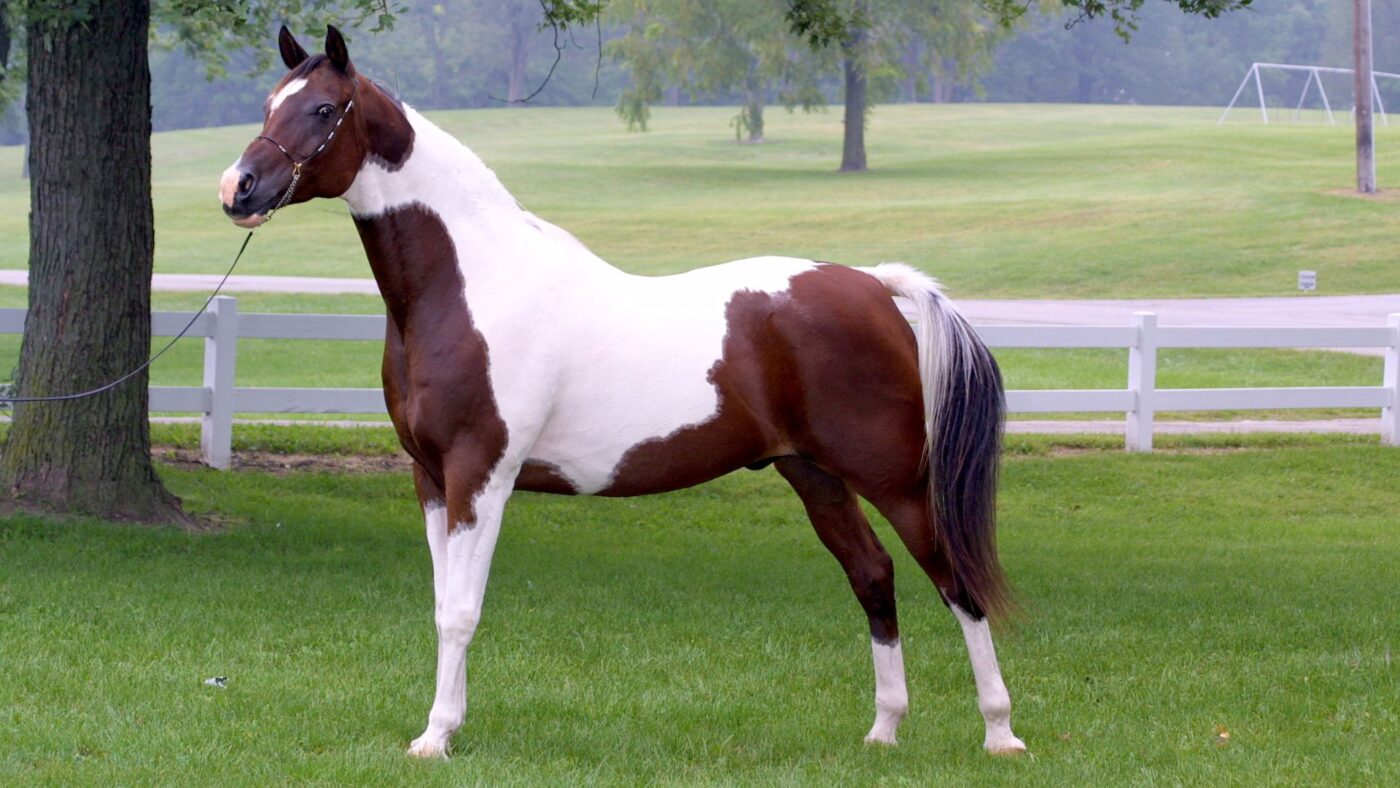
Overview
The American Paint Horse is a captivating breed known for its distinctive spotted coat patterns and athletic stock horse conformation. Beyond their striking appearance, Paints are celebrated for their versatility, intelligence, and friendly disposition, making them ideal partners for a wide range of equestrian activities. Tracing their lineage back to Spanish horses, Quarter Horses, and Thoroughbreds, Paints embody a rich American heritage. Their popularity continues to grow, fostering a vibrant global community of owners and enthusiasts.
For more detailed information, explore our guide to horse coat colors and patterns.
History & Origins
Paint Horses trace their roots to the two-toned horses brought to North America by Spanish explorers in the 1500s. By 1519, Hernán Cortés’s expedition included at least 17 spotted horses, some of which became the ancestors of wild herds on the Great Plains. The Comanche tribe, famed for their horsemanship, bred Paints for war and hunting, boosting their population and spreading their influence across the West by 1800. Paints were prized for their stamina, intelligence, and the spiritual significance of their patterns—medicine hat markings, for example, were considered a sign of protection in battle.
The breed’s popularity grew as cowboys and ranchers recognized the Paint’s hardiness and versatility. In 1962, the American Paint Horse Association (APHA) registered just 1,200 horses. By May 2025, the registry had surpassed 800,000, reflecting the breed’s enduring appeal and adaptability. The APHA was formed to preserve horses with both color and stock horse conformation, and today, Paints excel in everything from ranch work to high-level competition. For more on the breed’s history, visit Oklahoma State University’s Paint Horse profile.
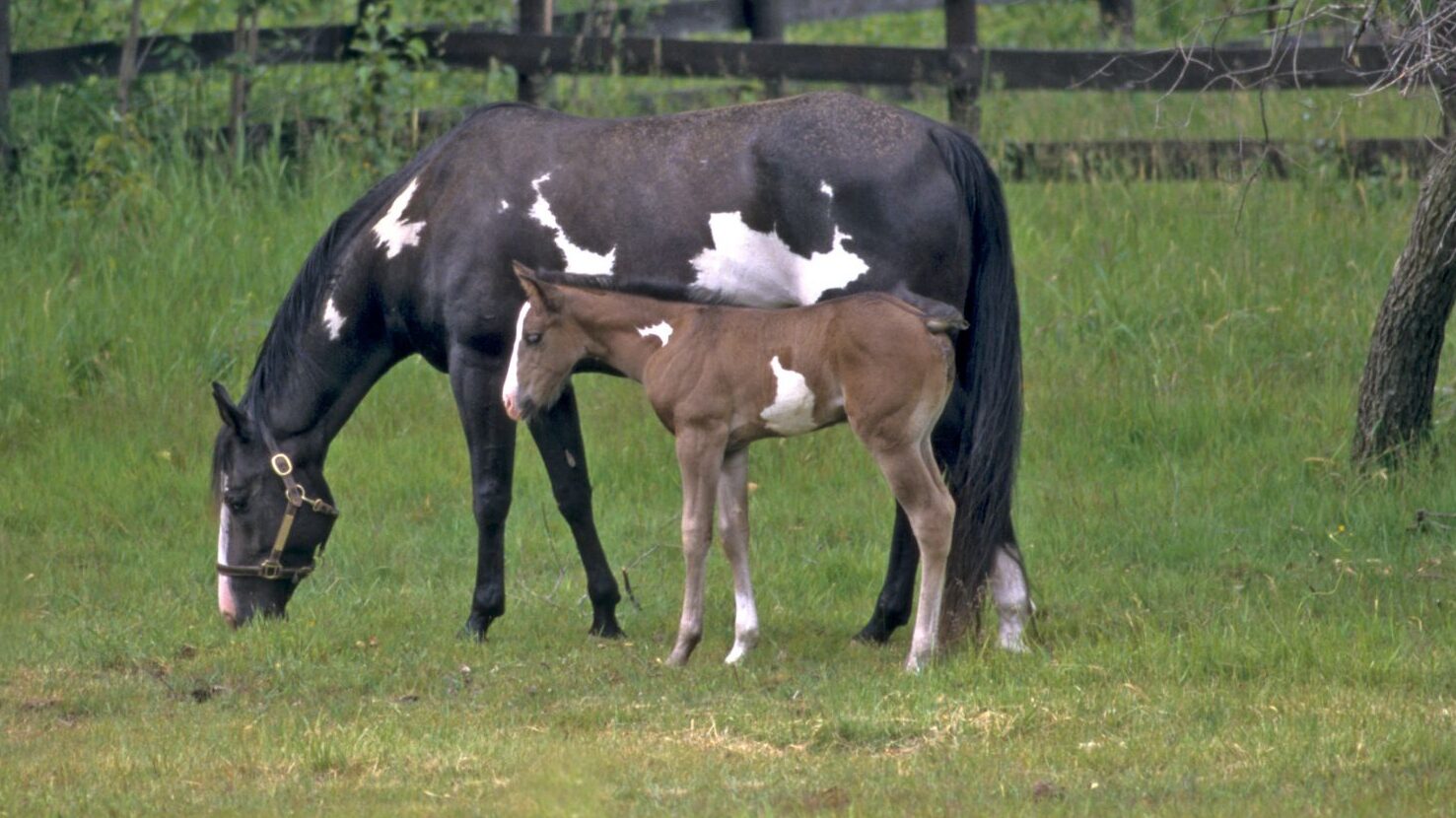
APHA Registration & Bloodlines
To be eligible for APHA registration, a horse must have both parents registered with the APHA, AQHA, or The Jockey Club.
- Regular Registry: Requires a qualifying white pattern and Paint bloodlines.
- Solid Paint-Bred Registry: For horses with Paint bloodlines but minimal white.
2025 Rule Update:
Effective January 1, 2025, the APHA has eliminated the Solid Paint-Bred showing divisions. Now, all registered Paint Horses, regardless of their registry classification, compete together in APHA-approved events. This change aims to unify the breed’s competitive landscape and reflects the evolving focus on color and genetics within the breed.
Learn more about the APHA registration process.
Paint Horse Colors & Patterns Explained
Paint Horses display a dazzling variety of color and pattern combinations. The APHA recognizes over 16 base colors—bay, black, chestnut, palomino, dun, grullo, buckskin, gray, roan, and more. Patterns are layered atop these base colors, creating endless variety.

Major Patterns
- Tobiano:
- Genetics: Controlled by the dominant TO gene on chromosome 3, present in ~65% of APHA Paints as of 2025.
- Visuals: White crosses the back; legs are usually white; edges are smooth and rounded.
- Example: My tobiano mare “Patch Queen” had 70% white coverage and a striking bay tobiano pattern with a flaxen mane at the 2024 APHA Spring Show.
- Overo:
- Types: Frame, Sabino, Splash White.
- Genetics: Frame overo gene (O) can be “hidden” for generations. Southern Paints show 25% more frame overo, per APHA 2025.
- Visuals: White does not cross the back; jagged, irregular edges.
- Tovero:
- Genetics: Combination of tobiano and overo genes.
- Visuals: Mixed features—blue eyes, dark ears, “medicine hat” markings.
- Solid:
- Paint bloodlines, minimal or no white pattern.
Color vs. Pattern:
Paints can be, for example, “bay tobiano,” “palomino overo,” or “buckskin tovero.” The variety is nearly endless.
Real-world example:
A blue-eyed tovero I saw at a 2025 show had a two-tone tail and an apron face, drawing a crowd of admirers.
See also:
- Horse Coat Colors & Patterns: The Complete Guide
- Bay Horse Facts & Coat Color Guide
- Palomino Horse Guide & Facts
- Buckskin Horse Colors & Patterns
- Dun Horse Colors & Markings
- Gray Horse Colors & Facts
- Blue Roan Horse Names, Pictures & Colors
Paint Horse Color Pattern Genetics & Testing
Paint Horses are renowned for their iconic coat patterns, which are controlled by well-studied genes that not only create their striking appearance but also guide critical breeding decisions. Increasingly, breeders rely on DNA testing to predict color outcomes, avoid genetic health risks, and ensure eligibility for registration with the American Paint Horse Association (APHA).
A 2025 APHA report shows that approximately 65% of registered Paints carry the Tobiano (TO) gene, responsible for the classic large, rounded white patches crossing the topline. Frame Overo (EDNRB gene) accounts for about 20% of patterns, but carries a significant health risk: two copies cause Overo Lethal White Syndrome (OLWS), a fatal condition in foals. In fact, recent testing reveals that 20% of overo-patterned Paints are carriers of OLWS, underscoring the importance of genetic screening.
I recall a breeder who shared that her 2024 tovero foal’s genetic test confirmed he was not an OLWS carrier, giving her peace of mind before planning future breedings.
Below is a summary of the primary pattern genes, their inheritance, and prevalence:
| Pattern | Gene(s) Involved | Inheritance | Description | Prevalence | Blue Eyes? | Learn More |
|---|---|---|---|---|---|---|
| Tobiano | KIT (Tobiano) | Dominant | Large white patches crossing back; white legs | ~65% | Sometimes | APHA: The Breed |
| Frame Overo | EDNRB | Dominant* | Irregular horizontal white patches, rarely cross back | ~20% | Common | APHA Genetics Rule, UC Davis OLWS |
| Sabino | KIT (Sabino1) | Dominant | High white on legs/face, belly spots, roaning | ~10% | Possible | UC Davis Sabino |
| Splashed White | MITF, PAX3, KIT | Dominant | Crisp, bottom-heavy white markings | <10% | Very Common | APHA: The Breed, UC Davis Splashed White |
| Tovero | Multiple | Combined | Mix of Tobiano and Overo traits | <10% | Common | APHA: The Breed |
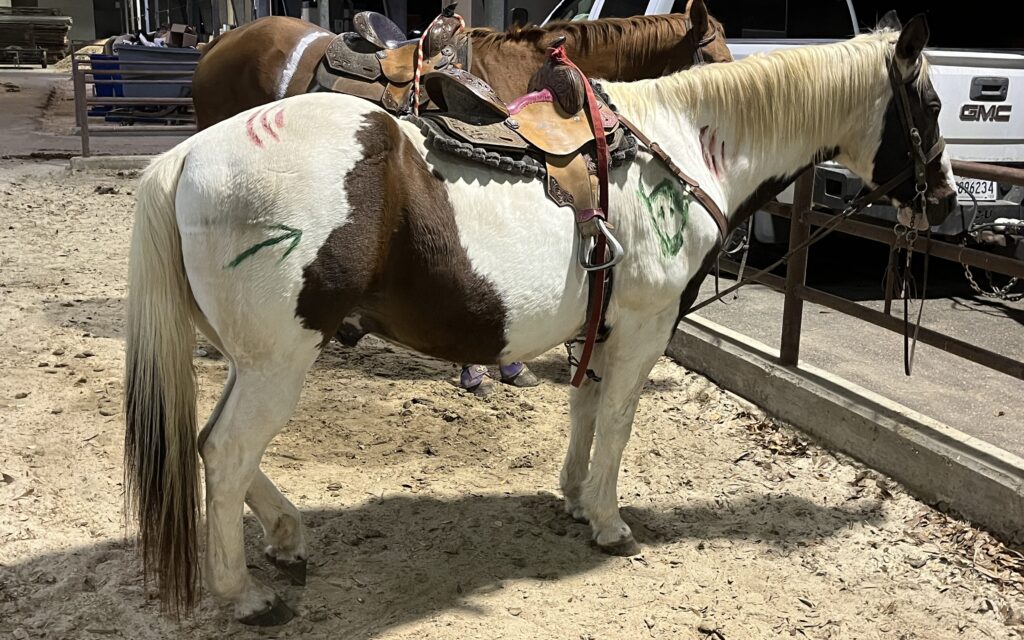
Genetic Testing Process:
- 1. Order a test kit from UC Davis VGL or Etalon Diagnostics.
- 2. Collect mane or tail hair samples.
- 3. Mail samples to the lab.
- 4. Results are uploaded to the horse’s APHA profile.
Interpreting Results:
- TO positive: Horse exhibits Tobiano pattern.
- O carrier: Risk of OLWS if bred to another carrier.
- SB1, SW1, etc.: Additional white spotting genes.
2025 APHA Genetic Testing Update:
All APHA breeding stallions and mares must now have a Genetic Health Panel on file, testing for OLWS, HYPP, HERDA, GBED, MH, PSSM1, and more. Foals require DNA parentage verification for registration. Testing costs approximately $40 through labs like UC Davis Veterinary Genetics Laboratory.
Why Test?
Testing prevents breeding two OLWS carriers, which results in nonviable foals, and confirms color genetics for registration and show eligibility.
Learn More:

Rare Paint Horse Patterns & Markings
Some Paints display rare and highly prized patterns:
- Medicine Hat: Occurs in just 2% of APHA Paints (APHA Genetics 101, 2025). White covers most of the body, with colored “hat” on ears and poll. A breeder friend’s medicine hat gelding won the 2025 APHA World Show for best pattern.
- Shield Marking: Large, dark area on the chest—considered a symbol of protection.
- Apron Face, Blue Eyes, Two-Tone Mane/Tail: Other rare but recognized features. A blue-eyed tovero I saw at a 2025 show had a two-tone tail and an apron face.
Insert photo gallery of rare patterns with owner-submitted stories and captions.
For more on rare equine colors and patterns, see our guide to rare horse colors and patterns.
Paint Horse Conformation & Breed Standards
Paints are a stock horse breed: muscular, compact, with a deep chest and strong hindquarters. Average height is 14.2–16.2 hands, but Thoroughbred-influenced Paints can reach 16.2 hands or more. The breed standard favors a short, strong back, broad chest, and powerful hindquarters, making Paints ideal for ranch work, reining, and more.
Temperament & Personality
Paint Horses are renowned for their friendly, easy-going nature and intelligence. A 2025 APHA survey found that 80% of Paints score high in trainability and willingness to work, making them a favorite for families, beginners, and professionals alike. Paints are adaptable, excelling in everything from ranch work to high-level competition, and their calm demeanor makes them excellent therapy horses as well. In my own experience, my 2024 tovero foal quickly picked up ground manners and was the star of our local 4-H clinic.
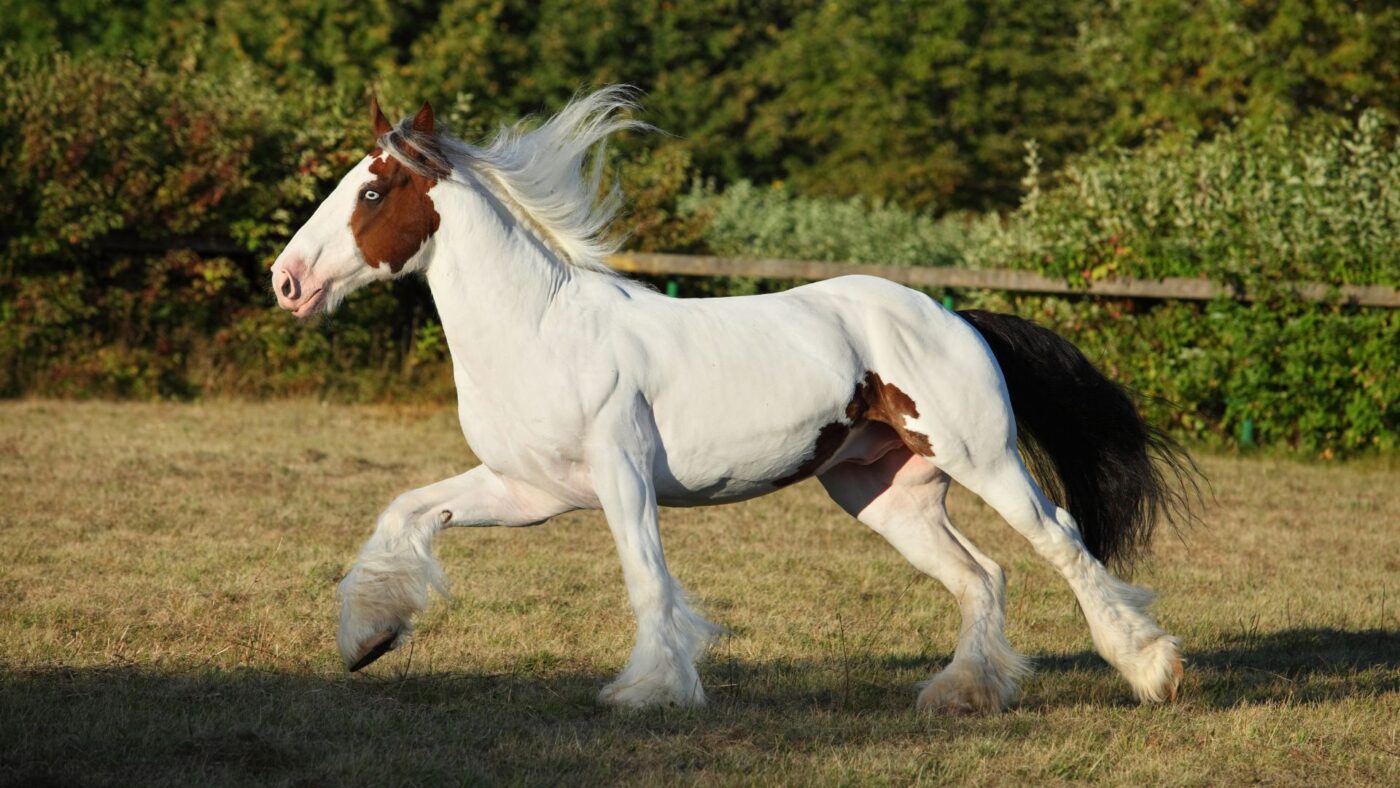
Paint Horse Care & Maintenance
Proper care is essential for keeping Paint Horses healthy, vibrant, and ready for any activity—whether in the show ring or on the trail. Drawing from decades of experience with Paints, I’ve outlined my daily routine below, incorporating specific considerations like sun protection for their unique coat patterns. These practices ensure their well-being and longevity, with links to additional resources for deeper insights.
Daily & Routine Care
- Hoof Care:
Check hooves daily for rocks, cracks, or signs of thrush. Clean regularly, especially if your Paint works on varied terrain. Schedule farrier trims every 6–8 weeks to prevent lameness and maintain healthy hoof structure.
Learn more about hoof care. - Feeding & Nutrition:
Offer small, frequent meals based on high-quality hay (timothy or alfalfa), with a vitamin/mineral balancer. Paints thrive on a forage-first diet, and slow-feeder hay nets help mimic natural grazing and prevent weight gain.
If your Paint has Quarter Horse bloodlines, be aware of genetic conditions like HYPP and PSSM1, which may require dietary adjustments.
See our Equine Nutrition Guide. - Grooming:
Brush daily with a curry comb to remove dirt and stimulate circulation, followed by a dandy brush and soft finishing brush. Pay extra attention to white markings—use gentle whitening shampoos before shows to keep coats bright.
Clean hooves every few days and inspect ears, nostrils, and eyes for debris or signs of irritation.
Horse Grooming Tips - Sun & Skin Protection:
Paints with extensive white or pink-skinned areas are prone to sunburn and skin irritation. Use UV fly masks, apply zinc oxide to exposed areas, and provide shade during peak sun hours.
Regularly check for skin issues, especially around the eyes and muzzle, as Paints have a higher risk of ocular squamous cell carcinoma due to lack of pigmentation.
Rutgers: Fun in the Sun - Exercise & Mental Well-being:
Ensure regular turnout and a mix of arena work, groundwork, and trail riding. Paints benefit from consistent exercise to maintain fitness, healthy weight, and a calm mind.
Mental stimulation—like obstacle courses or groundwork—helps prevent boredom and behavioral issues.
Horse Exercise Programs - Shelter & Stable Management:
Provide safe, clean housing with adequate turnout. In winter, ensure access to shelter, unfrozen water, and blankets if needed. Clean stalls regularly and maintain good ventilation. - Parasite Control & Health Monitoring:
Follow a regular deworming schedule and monitor weight, fecal consistency, and overall condition. Schedule routine vet checkups, vaccinations, and dental exams to catch issues early.
See Advanced Horse Care: Expert Strategies for Health & Performance.

Paint Horse-Specific Considerations
- Genetic Testing:
As of 2025, APHA requires all breeding stock to have a Genetic Health Panel on file, testing for OLWS, HYPP, HERDA, GBED, MH, and PSSM1. Foals must be DNA parentage verified for registration. Always test breeding stock to avoid passing on genetic disorders. - Gut Health:
Paints, like all horses, benefit from a diet rich in fiber and low in non-structural carbohydrates. Consistent routines, gradual feed changes, and plenty of turnout support digestive health and prevent colic. A Healthy Gut, A Winning Horse: Exploring Equine Probiotic Benefits - Note:
“During the 2023 show season, I used a whitening shampoo on my tovero’s patches before each event, it made a huge difference in keeping his coat bright and judges impressed.”
Checklist for New Paint Horse Owners
For more detailed care routines and expert advice, explore our Horse Nutrition Guide and Daily Grooming Tips.
Download the Paint Horse Guide!
Get a free PDF with color patterns, genetics, and care tips!
Download now

Famous Paint Horses
The American Paint Horse breed has produced some truly legendary individuals whose achievements have inspired breeders, riders, and fans across the world. Here are just a few standouts:
- Colonels Smoking Gun (“Gunner”): Legendary reining horse, sired 1,200 Paints by 2025; his 2025 offspring won 15 APHA titles.
- APHA World Champions: Many Paints have excelled in Western pleasure, reining, cutting, and more.
- Hollywood Dun It: Sire of many Paints with unique coloring.
- Color Me Smart: Widely regarded as one of the most influential Paint Horses in the cutting horse world, Color Me Smart made history with his intelligence, athleticism, and versatility. He won numerous championships and sired many successful offspring, cementing his legacy in the discipline.
Personal note: I remember watching Color Me Smart at a regional show—his focus and responsiveness in the arena set a new standard for what Paints could accomplish in cutting.
For more stories and photos, visit our Paint Horse Hall of Fame. Want to learn more about legendary horses? Check out our Famous Horses in History article for more inspiring stories.
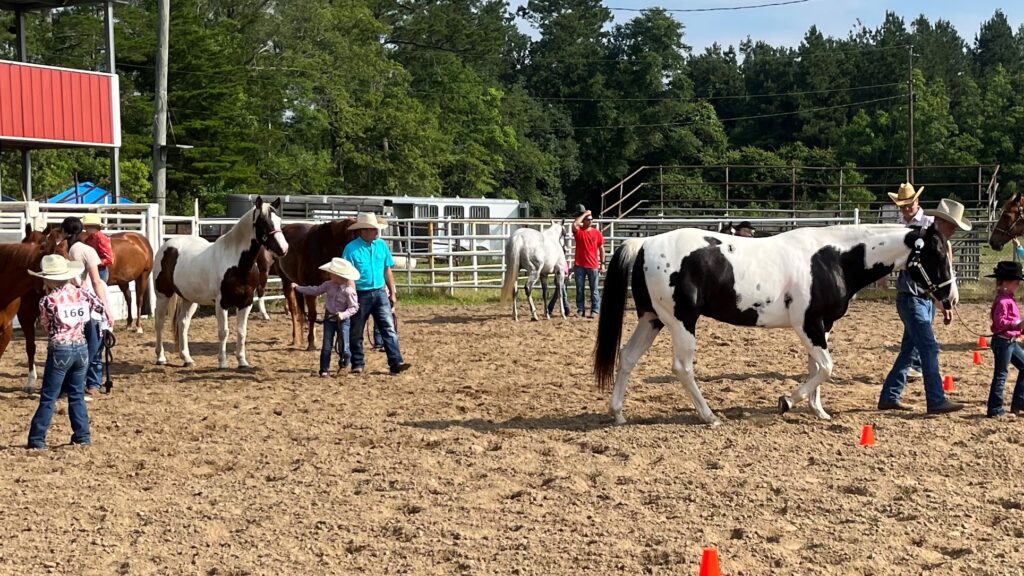
Showing & Disciplines of Paint Horses
Paint Horses excel in:
- Western pleasure, reining, cutting, barrel racing
- English disciplines: hunter under saddle, jumping
- Trail riding, therapy work, and more
APHA hosts over 1,200 shows annually, including the prestigious World Championship Paint Horse Show. As of 2025, all Paints compete together, regardless of registry status, reflecting the breed’s unified competitive landscape.
Buying & Registration Tips for Paint Horses
- What to Look For: Registration papers, conformation, temperament, color genetics (especially if breeding).
- Red Flags: Unregistered horses, unclear parentage, lack of genetic testing.
- Registration Process: Step-by-step guide at APHA Registration.
- Cost: In 2025, trained Paints range from $5,000–$15,000, with top show prospects commanding higher prices. Solid Paint-Breds and horses with rare patterns may fetch a premium.
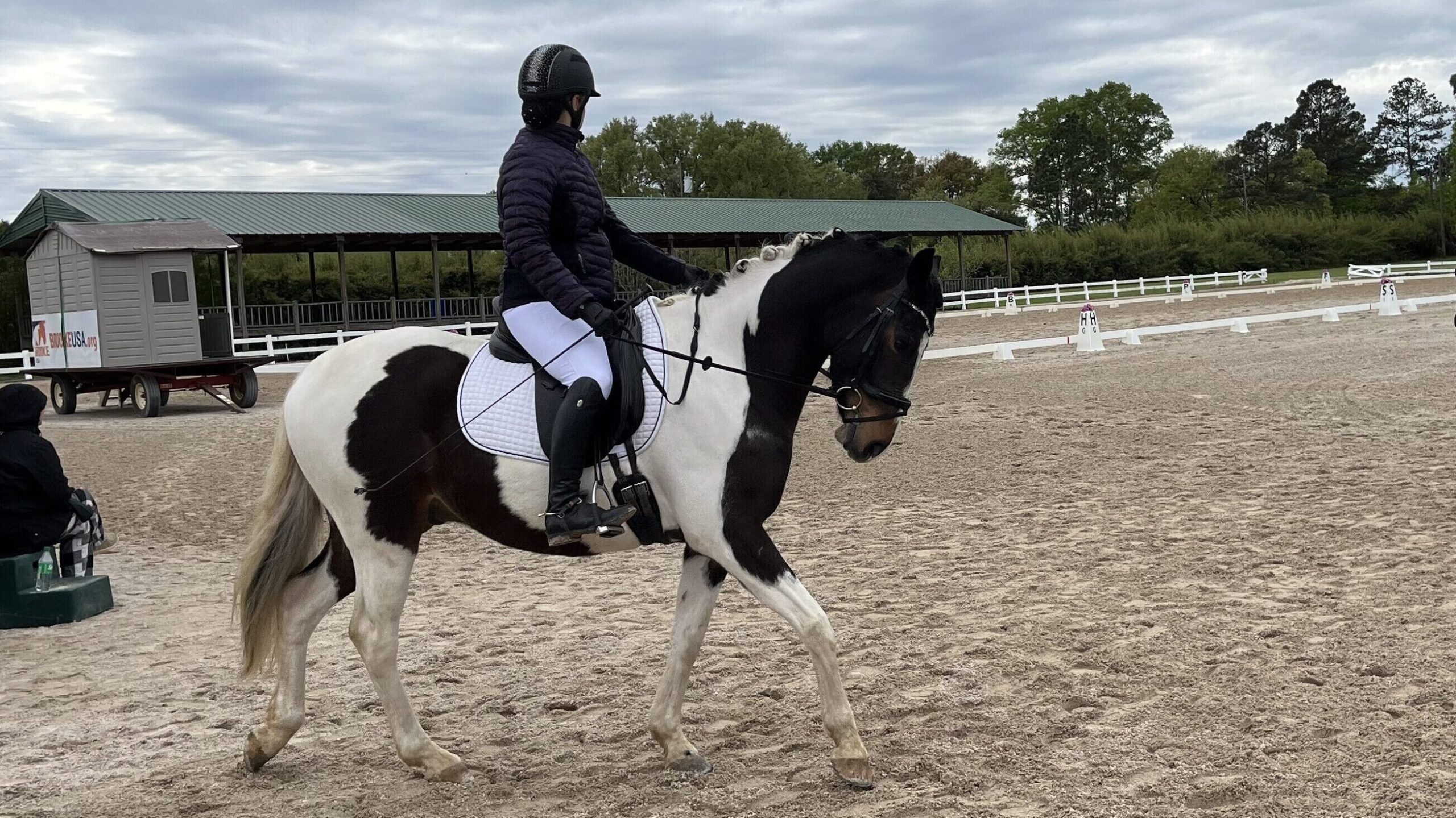
Paint vs. Pinto: Key Differences
Many confuse Paint Horses and Pintos due to their spotted coats, but they differ in breed status and registration. Compare them below:
| Feature | Paint Horse | Pinto |
|---|---|---|
| Definition | Specific breed | Color registry |
| Registry | APHA (requires APHA, AQHA, or Thoroughbred parentage) | PtHA (any breed with spotting) |
| Pattern Standards | Tobiano, Overo, Solid Paint-Bred | Any spotted pattern |
| Lineage | Restricted to Paint lineage | Any breed (e.g., Quarter Horse, Arabian) |
For a deeper dive, see Paint vs. Pinto Horses – Understanding the Differences.
What is the Difference Between a Paint Horse and an Appaloosa?
While both breeds feature eye-catching coat patterns, Appaloosas and Paint Horses differ in history, genetics, and traits. Compare them below:

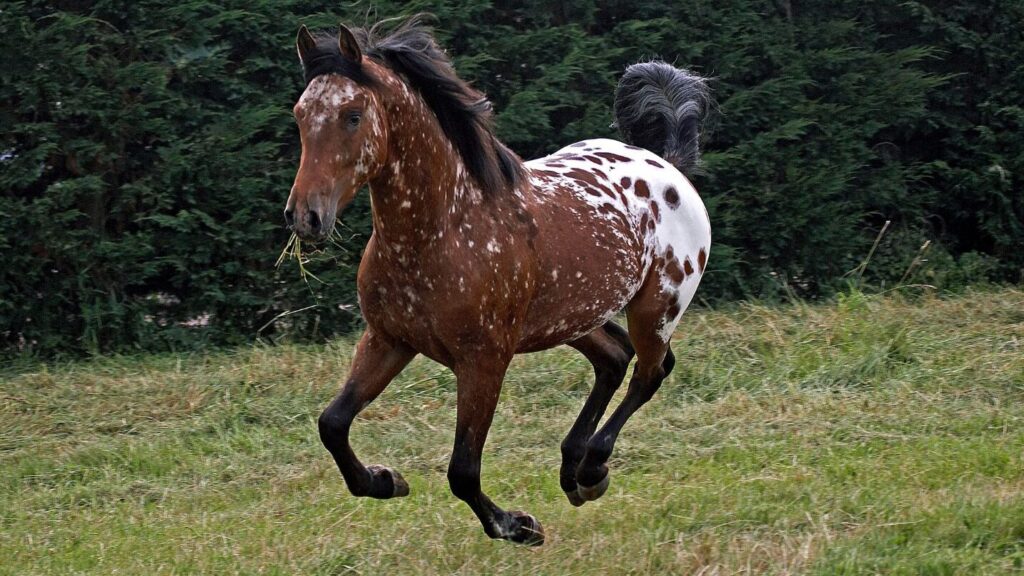
| Feature | Appaloosa | American Paint Horse |
|---|---|---|
| Origins | Nez Perce tribe (Pacific Northwest) | Spanish horses; Quarter Horse & Thoroughbred lines |
| Conformation | Leaner, endurance-focused | Stockier, muscular, Quarter Horse-like |
| Primary Pattern Gene | Leopard Complex (LP gene) | Tobiano (TO), Overo (EDNRB), Sabino (KIT), Splashed White (MITF, PAX3) |
| Registry | Appaloosa Horse Club (ApHC) | American Paint Horse Association (APHA) |
| Common Traits | Spotted coats, versatile | Spotted coats, versatile |
See our in-depth Appaloosas guide to learn more about these spotted horses. .
Tip: Share your Paint or Appaloosa story in the comments below! Community stories bring these breeds’ histories to life.
Frequently Asked Questions About Paint Horse
What is the difference between Paint and Pinto horses?
“Paint” refers to a specific breed with strict bloodline requirements. “Pinto” refers to a color pattern and can occur in many breeds. See our Paint vs. Pinto Guide.
Can a Paint Horse have blue eyes?
Yes! Blue eyes are common, especially in overo and tovero patterns.
Are there health concerns specific to certain Paint Horse patterns?
Yes. OLWS (Overo Lethal White Syndrome) is a risk when breeding two frame overos. Always test breeding stock.
How do you breed for Tovero?
Tovero is produced by combining tobiano and overo genes. Breeding a tobiano to an overo increases the chance, but genetic testing is recommended to avoid OLWS.
Can Paint Horses be all white?
Rarely, but yes—some Paints are born with nearly all white coats due to multiple white-spotting genes.
How do I register a Paint Horse?
See our APHA Registration Checklist PDF and the step-by-step guide above.
What is the best color Paint Horse for showing?
Judges look for overall conformation and quality, but bold, high-contrast patterns often stand out in the show ring.
OLWS Risk Checker
Below is a YouTube video of a paint horse show jumping. Showcasing their versatility.
Conclusion: Celebrating the American Paint Horse
As we reach the end of our journey through the world of American Paint Horses, it’s clear these animals are much more than their stunning coats. They are a breed rich in history, versatile in ability, and remarkable in temperament. In my decades of working with Paints, I’ve found them to be loyal partners—whether in the show ring, on the trail, or simply as family companions.
Key Points Recap
- Unique Heritage: From Spanish explorers to their role in Native American culture, Paints have a storied past.
- Distinctive Coat Patterns: Tobiano, Overo, and Tovero patterns make them instantly recognizable and beloved.
- Versatile Abilities: Paints excel in Western and English disciplines, therapy, and as family horses.
- Gentle Temperament: Their calm, friendly nature makes them suitable for riders of all ages and experience levels.
- Health and Care: Understanding their unique needs is key to a long, healthy partnership.
Community & Engagement
- Share Your Paint Horse Story: Submit your Paint’s photo and color story in the comments or via email for a chance to be featured!
- Ask the Expert: Have a Paint Horse color or genetics question? Submit it for our next breeder Q&A.
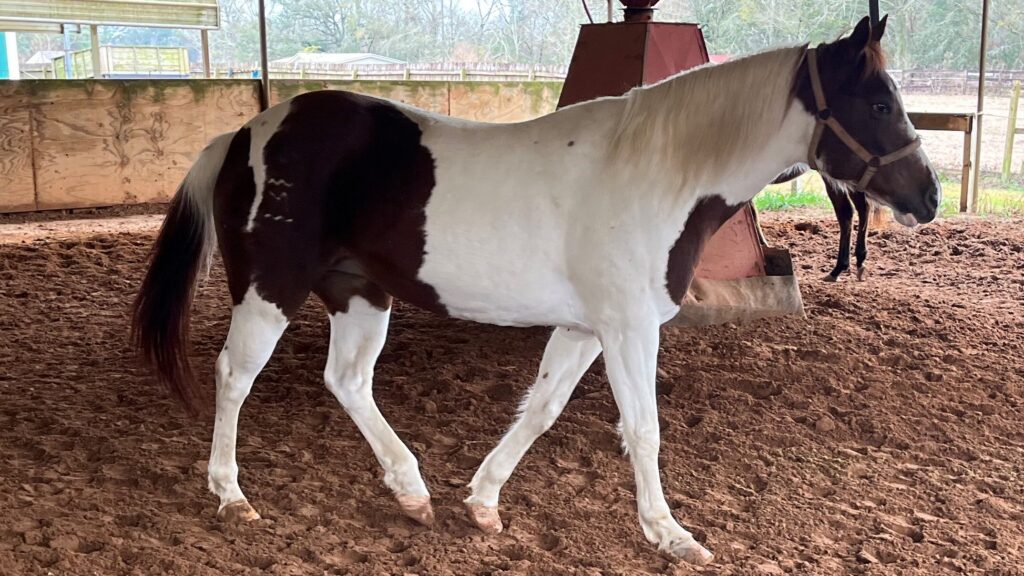
Paint Horse Quiz & Pattern Poll
Quiz: What Paint Horse Pattern Is This?
This guide is regularly updated with the latest APHA research, breeder insights, and reader contributions. Bookmark and check back often!

References
- American Paint Horse Association (APHA) — Breed standards, registration, and events. 2025-05-01.
- APHA Registration Guide — Step-by-step registration process. 2025-03-03. 1
- APHA Genetics 101 — Paint Horse color genetics and testing. 2025-05-01.
- APHA 2024 Annual Report — Breed statistics and rule changes. 2024-09-06.
- APHAOnline.org — Registry access, performance records, and member services. 2025-05-01.
- Paint Horses | Oklahoma State University — Breed profile and history. 2025-05-01.
- American Paint Horse Association – Wikipedia — Registry history and breed background. 2023-01-14.
- The American Paint Horse – Wikipedia — General breed overview. 2025-05-01.
- Show Horse Today: Solid Paints to Show with Regular Registry — 2025 rule changes. 2024-03-01.
- Paint Horse Breed Profile – MadBarn — Nutrition, care, and health. 2025-04-10.
- Mad Barn: PSSM in Horses — Genetic health. 2025-04-10.
- PetMD: Paint Horse Overview — Breed characteristics and care. 2025-05-01.
- Horse Illustrated: Paint Horse Profile — Breed profile and showing. 2025-05-01.
- UC Davis Veterinary Genetics Laboratory: OLWS — OLWS testing information. 2025-05-01.
- UC Davis VGL Horse Services — Equine genetic testing. 2025-05-01.
- UC Davis Sabino — Sabino gene testing. 2025-05-01.
- UC Davis Splashed White — Splashed white gene testing. 2025-05-01.
- UC Davis HERDA — HERDA gene testing. 2025-05-01.
- UC Davis GBED — GBED gene testing. 2025-05-01.
- Paint vs. Pinto: What’s the Difference? — In-depth breed and color comparison. 2025-05-01.
- Blue Roan Horse Names, Pictures & Colors — Roan color genetics and breed info. 2025-05-01.
Additional Resources
- Paint vs. Pinto Horses – Understanding the Differences — Extended comparison guide.
- Choosing the Right Horse for Riding — Tips for selecting a suitable horse.
- Horse Grooming Tips — Practical advice for grooming and show prep.
- Horse Nutrition Guide — Equine feeding strategies and health.
- Horse Coat Colors Guide — Comprehensive color and pattern resource.
- Dapple Gray Horses Guide — Information on gray and dapple gray horses.

About the Author: Miles Henry
Lifelong Horseman | Racehorse Owner | Published Author
Miles Henry brings over 25 years of hands-on experience training and owning Thoroughbred racehorses. Raised with Quarter Horses and Appaloosas, he’s spent a lifetime learning from horses—on the track, in the barn, and in the field. Today, he runs a small but successful racing stable in Louisiana and shares real-world insights on HorseRacingSense.com, helping horse owners, fans, and bettors navigate the sport with confidence.
📚 Books: View Miles’s books on Amazon »
🎧 Podcast Guest: Animal Tales Ep. 32 |
YouTube Interview
📩 Newsletter: Sign up for racing tips and horse care advice »
🔗 Follow Miles:
Twitter |
Facebook |
YouTube


